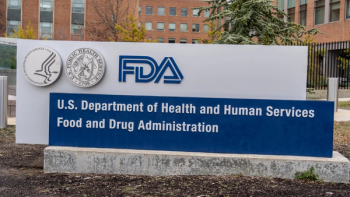Key Takeaways
- Keytruda plus Trodelvy cuts triple-negative breast cancer (TNBC) progression risk by 35%: In the ASCENT-04/KEYNOTE-D19 trial, the combination of Keytruda plus Trodelvy significantly outperformed Keytruda plus chemotherapy in PD-L1–positive metastatic TNBC.
- Progression-free survival (PFS) extended to 11.2 months: Patients receiving the Keytruda-Trodelvy combo saw a median PFS improvement of 3.4 months compared to those on standard chemotherapy.
- Promising trend in overall survival (OS) with no new safety signals: The combination showed a favorable safety profile and early OS data suggests the potential to shift the first-line treatment paradigm in PD-L1–positive TNBC.
Results from the Phase III ASCENT-04/KEYNOTE-D19 trial showed that Merck’s Keytruda (pembrolizumab) significantly reduced the risk of disease progression or death when combined with Gilead’s Trodelvy (sacituzumab govitecan-hziy) in patients with PD-L1–positive (CPS ≥10) inoperable or metastatic triple-negative breast cancer (TNBC). These findings were presented at the 2025 American Society of Clinical Oncology (ASCO) Annual Meeting.1
How Effective is the Keytruda-Trodelvy Combination in Treating PD-L1–Positive TNBC?
“These results have the potential to be an important advancement for patients with PD-L1–positive metastatic triple-negative breast cancer, a population for whom first-line options remain limited,” ASCENT-04/KEYNOTE-D19 primary investigator Sara Tolaney, MD, MPH, Dana-Farber Cancer Institute, said in a press release. “By combining sacituzumab govitecan with pembrolizumab, we’re seeing meaningful gains in progression-free survival and a promising trend in overall survival (OS)—findings that could support a new frontline standard of care for this aggressive disease.”
Study Design and Treatment Details
- The global, open-label ASCENT-04/KEYNOTE-D19 trial included 443 patients who were randomly assigned in a 1:1 ratio to receive either Keytruda plus Trodelvy or Keytruda plus chemotherapy.
- Merck noted that the chemotherapy regimen included either gemcitabine plus carboplatin, paclitaxel, or nab-paclitaxel.
- Treatment continued until blinded independent central review (BICR)-verified disease progression or unacceptable toxicity.
- The primary endpoint of the study was progression-free survival (PFS) as defined by BICR.
- Key secondary endpoints included OS, objective response rate (ORR), and duration of response (DOR).
Efficacy Outcomes
- Results demonstrated a median PFS of 11.2 months in the Keytruda plus Trodelvy arm compared to 7.8 months in the control arm.
- The treatment combination demonstrated a 35% reduction in the risk of disease progression or death.
- The treatment combination also demonstrated a 59.7% ORR compared to 43.2% in the control arm.
- DOR was 16.5 months in the combination arm compared to 9.2 months in the control arm.
- At the time of data cutoff, OS was immature but showed early encouraging signs.
- The safety profile of the combination was found to be consistent with the known safety profile of both treatments individually, with no new safety signals identified.
- Full results are expected to be shared with regulatory authorities globally.1
Breast Cancer Context and Impact
According to the American Cancer Society, breast cancer accounts for 30% of all new cancer diagnoses in women in the United States each year. It is most common in middle-aged and older women, with a median age at diagnosis of 62 years. While rare, a small proportion of women are diagnosed under the age of 45 years. By the end of 2025, an estimated 316,950 new cases of invasive breast cancer and 59,080 new cases of ductal carcinoma in situ are projected, along with 42,170 related deaths.2
Company Perspective and Regulatory Outlook
“We’re committed to building on the established role of Keytruda as a foundational treatment for people with TNBC to provide new options in earlier lines of treatment, in the hope of improving outcomes for people living with this disease,” said Marjorie Green, MD, senior vice president and head of oncology, global clinical development, Merck Research Laboratories. “These data support the addition of this TROP2-directed ADC to KEYTRUDA, demonstrating the potential to help people with TNBC and to give doctors another option to treat this disease.”
Merck and Gilead began their collaboration on the ASCENT-04/KEYNOTE-D19 trial in 2021. Currently, Keytruda is approved in the United States and Europe for the treatment of high-risk early-stage TNBC in combination with chemotherapy as a neoadjuvant therapy, and in combination with chemotherapy for locally recurrent unresectable or metastatic TNBC in patients whose tumors express PD-L1.1
References
1. KEYTRUDA® (pembrolizumab) Plus Trodelvy® (sacituzumab govitecan-hziy) Reduced Risk of Disease Progression or Death by 35% Versus KEYTRUDA Plus Chemotherapy in First-Line PD-L1+ Metastatic Triple-Negative Breast Cancer (TNBC). Merck. May 31, 2025. Accessed June 6, 2025. https://www.merck.com/news/keytruda-pembrolizumab-plus-trodelvy-sacituzumab-govitecan-hziy-reduced-risk-of-disease-progression-or-death-by-35-versus-keytruda-plus-chemotherapy-in-first-line-pd-l1-metastatic-tri/
2. Key Statistics for Breast Cancer. American Cancer Society. Accessed June 6, 2025. https://www.cancer.org/cancer/types/breast-cancer/about/how-common-is-breast-cancer.html





